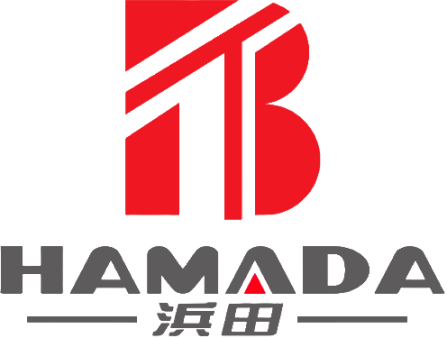What is the purpose of a rotary actuator
What is the purpose of a rotary actuator
rotary actuator
In the field of automation and mechanical control, rotary actuators are widely used in various equipment and systems as key components. Their unique functions and diverse application scenarios make them an important part of modern industry. So, what is the purpose of rotary actuators?
Basic principles of rotary actuators
A rotary actuator is a mechanical device that can convert energy into rotary motion. Depending on the energy source, rotary actuators can be divided into three types: electric, pneumatic and hydraulic. Its core working principle is to drive the internal motor or piston through the input of electrical energy, air pressure or hydraulic pressure to achieve the rotational motion of the shaft.
Promoter of efficient automation
One of the main uses of rotary actuators is to promote efficient automation processes. On industrial production lines, rotary actuators are used to control the movement of robotic arms, valves and rotary tables. These devices require precise and fast rotational movements to achieve efficient material handling, processing and assembly. For example, in the automotive manufacturing industry, robotic arms driven by rotary actuators can accurately weld body parts, improving the speed and accuracy of production lines.
Multifunctional control and regulation
Rotary actuators are also used for the control and regulation of various systems. In automated piping systems, rotary actuators drive the opening and closing of valves, regulate the flow and pressure of fluids, and ensure the normal operation and safety of the system. In heating, ventilation and air conditioning (HVAC) systems, rotary actuators adjust the position of dampers to control air flow and temperature and provide a comfortable indoor environment.
Precision positioning and repeatability
Rotary actuators also perform well in applications that require precision positioning and high repeatability. Their high precision and stable performance make them ideal for precision instruments and equipment. For example, in electronics manufacturing and semiconductor processing, rotary actuators are used for precision positioning platforms and testing equipment to ensure that every detail of the production process is accurate.
Enhanced safety and reliability
Rotary actuators also play an important role in safety and reliability. In the oil and gas industry, rotary actuators are used to control the opening and closing of key valves to prevent leaks and accidents. In hazardous environments, explosion-proof rotary actuators can ensure that equipment operates under safe conditions and protect the safety of personnel and assets.
Future development direction
With the development of industrial automation and intelligence, the technology of rotary actuators is also constantly improving. Future rotary actuators will pay more attention to intelligent control and network connection, and realize interconnection with other devices through sensors and communication technologies. This will further improve the automation level and operating efficiency of the system and promote the process of intelligent manufacturing.
In addition, the design of rotary actuators will pay more attention to energy saving and environmental protection. Efficient energy conversion and low energy consumption design can not only reduce operating costs, but also reduce the impact on the environment, which is in line with the trend of sustainable development.
In summary, rotary actuators play a multifunctional and indispensable role in modern industry. Its uses cover many aspects such as efficient automation, precision control, system adjustment and safety assurance. With the continuous advancement of technology, rotary actuators will continue to promote the progress of various industries and contribute to intelligent and sustainable development.
 English
English Español
Español Português
Português русский
русский français
français 日本語
日本語 Deutsch
Deutsch Tiếng Việt
Tiếng Việt Italiano
Italiano Nederlands
Nederlands ไทย
ไทย Polski
Polski 한국어
한국어 Svenska
Svenska magyar
magyar Malay
Malay বাংলা
বাংলা Dansk
Dansk Suomi
Suomi हिन्दी
हिन्दी Pilipino
Pilipino Türk
Türk Gaeilge
Gaeilge عربى
عربى Indonesia
Indonesia norsk
norsk اردو
اردو čeština
čeština Ελληνικά
Ελληνικά Українська
Українська Javanese
Javanese فارسی
فارسی தமிழ்
தமிழ் తెలుగు
తెలుగు नेपाली
नेपाली Burmese
Burmese български
български ລາວ
ລາວ Latine
Latine Қазақ
Қазақ Euskal
Euskal Azərbaycan
Azərbaycan slovenský
slovenský Македонски
Македонски Lietuvos
Lietuvos Eesti Keel
Eesti Keel Română
Română Slovenski
Slovenski मराठी
मराठी Српски
Српски
Analysis of Harmonic Drive Harmonic Drive Gearbox Applications in the Global Semiconductor Cleaning Equipment Market
In the semiconductor manufacturing industry, cleaning equipment, as a critical link in wafer processing, places extremely stringent requirements on the precision and reliability of its transmission systems.
Read MoreHigh-Precision Applications of Harmonic Drive Harmonic Gear Reducers in Semiconductor Polishing Equipment
In the front-end processes of semiconductor manufacturing, chemical mechanical planarization (CMP) polishing equipment places extremely stringent requirements on the precision and reliability of transmission components.
Read MoreAnalysis of Harmonic Drive Harmonic Drive Gearboxes' Global Market Application in Laser Processing Centers
In the field of laser processing equipment, high-precision transmission systems are a core element ensuring processing quality. Harmonic Drive harmonic drive gearboxes, with their unique technological advantages, have become a key component of transmission systems in laser processing centers worldwide.
Read More